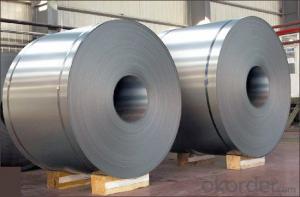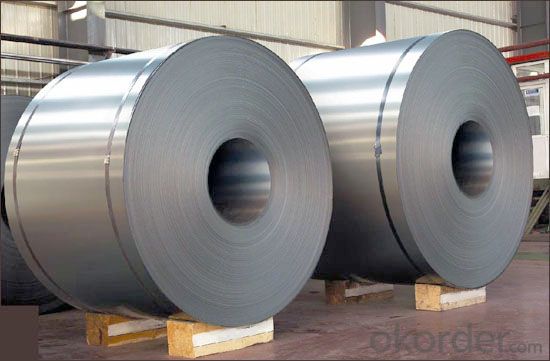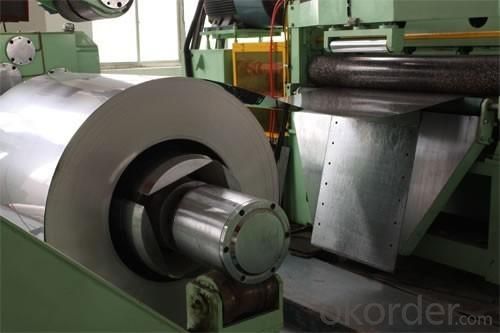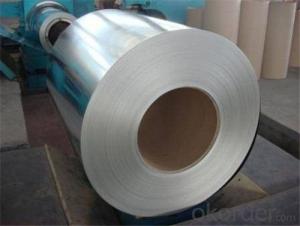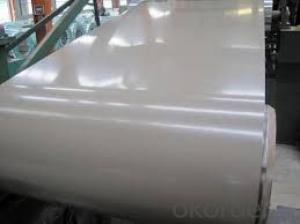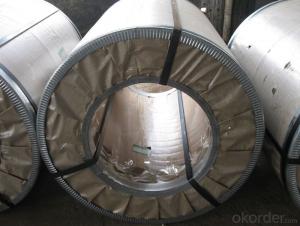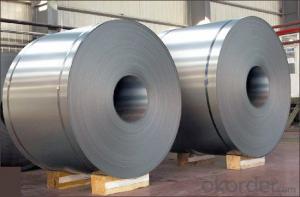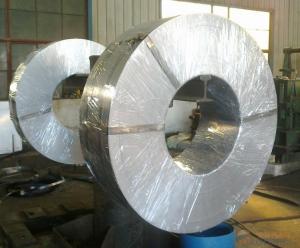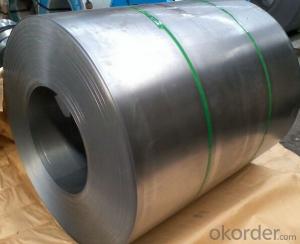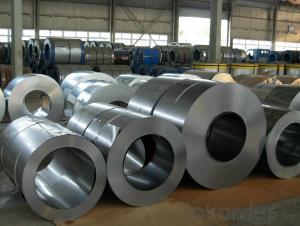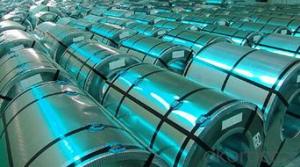Chinese Best Cold Rolled Steel Coil--Good visual Effect China
- Loading Port:
- China main port
- Payment Terms:
- TT OR LC
- Min Order Qty:
- 50 m.t.
- Supply Capability:
- 10000 m.t./month
OKorder Service Pledge
OKorder Financial Service
You Might Also Like
Chinese Best Cold Rolled Steel Coil--Good visual Effect China
1.Structure of Cold Rolled Steel Coil--Good visual Effect China:
The raw material of cold rolled steel coil/sheet is high quality hot rolled product, and after pickling continuous rolling, degreasing, annealing,skin pass,slitting and cut to length line etc. Along with it many kinds of new technology and new process of global cold rolling production have been applied. Therefore the quality of the goods could be guaranteed. The product is widely used in outdoor and interior decoration, furnishing manufacturing, home appliance, automobile etc.
2.Main Features of Cold Rolled Steel Coil--Good visual Effect China:
• Excellent process capability
• Smooth and flat surface
• Workability, durability
• Excellent heat resistance performance
• Good formability
3. Images:
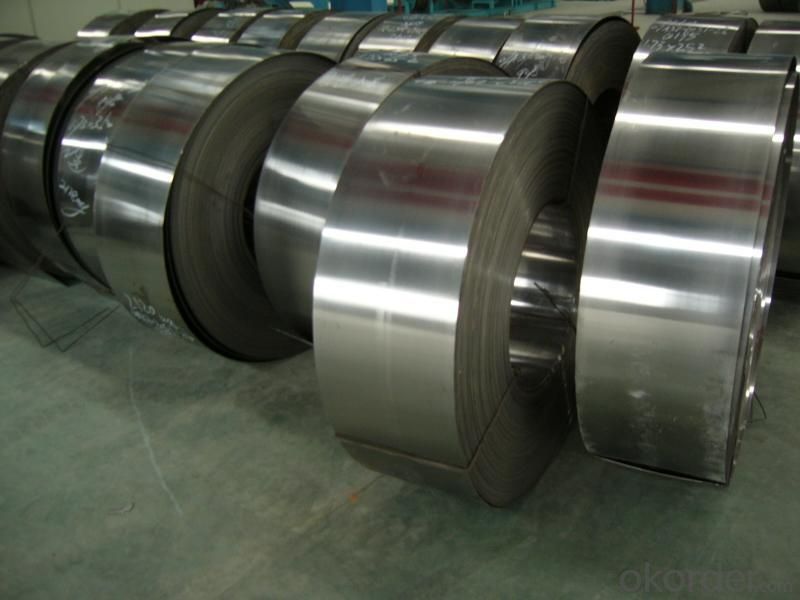
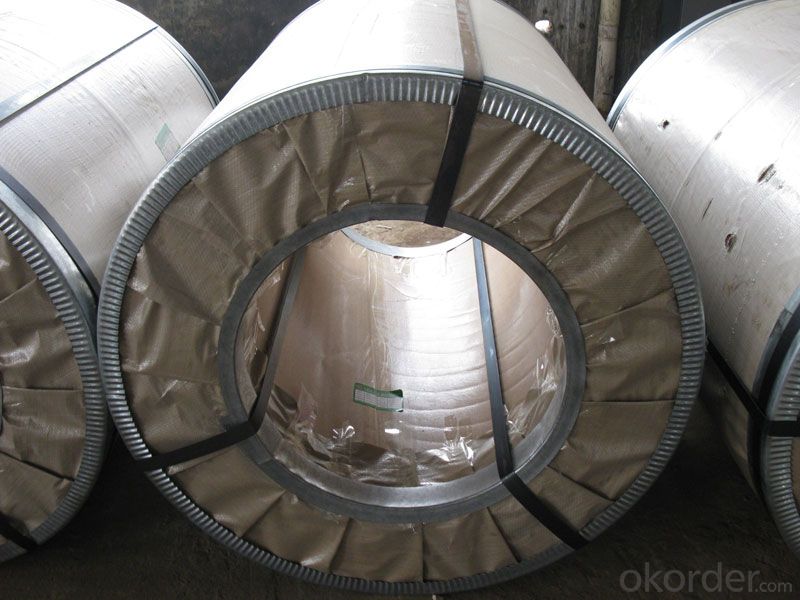
4.Cold Rolled Steel Specification:
Standard:AISI,ASTM,DIN,GB,JIS,JIS G3302 ASTM 653M EN10142
Grade: Q195~Q345
Thickness: 0.16mm~2.0mm
Width: 1250mm MAX
Coil weight:3-12 MT
Coil ID:508/610mm
5.FAQ :
1.How to guarantee the quality of the products?
We have established the international advanced quality management system,every link from raw material to final product we have strict quality test
2. How long can we receive the product after purchase?
Usually within thirty working days after receiving buyer’s advance payment or LC. We will arrange the factory manufacturing as soon as possible. The cargo readiness usually takes 15-25 days, but the shipment will depend on the vessel situation.
- Q: What are the different types of steel coil packaging techniques?
- In the industry, there are various steel coil packaging techniques commonly used. These techniques aim to safeguard the steel coils throughout storage, transportation, and handling, ensuring their arrival in excellent condition. One technique utilized is called "eye-to-the-sky" packaging, where the steel coils are vertically stacked with the coil's eye facing upward. They are then secured using steel strapping or banding. This method is commonly employed for smaller coils and effectively shields against damage caused by handling and transportation. Another typical packaging technique is "eye-to-the-wall" packaging. Here, the steel coils are horizontally stacked with the coil's eye facing the wall. They are also secured using steel strapping or banding. This particular method is often used for larger coils and provides enhanced stability during transportation. "Shrink-wrapping" is a third packaging technique wherein the steel coils are tightly wrapped in plastic shrink-wrap material. This offers protection against moisture, dust, and other contaminants. Shrink-wrapping is especially useful when steel coils need to be stored or transported outdoors or in harsh environments. Moreover, certain steel coil packaging techniques involve the usage of wooden pallets or skids. The coils are placed on these pallets or skids, which provide a stable base and enable easy handling using forklifts or other equipment. Additionally, the coils can be secured to the pallets or skids using steel strapping or banding. Ultimately, the selection of a steel coil packaging technique depends on factors like coil size, transportation requirements, and environmental conditions. By choosing the appropriate packaging technique, steel coils can be adequately protected and delivered to their destination without any damage or deterioration.
- Q: How do steel coils contribute to fire resistance in buildings?
- Steel coils contribute to fire resistance in buildings in several ways. Firstly, steel coils have high melting points, which means they can withstand extremely high temperatures without losing their structural integrity. This helps prevent the collapse of the building during a fire. Additionally, steel coils have low thermal conductivity, meaning they do not readily transfer heat. This property helps to contain the spread of fire, preventing it from spreading rapidly within the building. Moreover, steel coils can be used to reinforce concrete structures, enhancing their fire resistance. By providing strength and stability to the building, steel coils play a crucial role in ensuring the overall fire safety of the structure.
- Q: So finally got around to watching man of steelnow i heard a few times that batman was in iti didn't se him.in the film is it something subtle I've just missed or is he not in it?when i googled it got loads of results for them being together in the new film but nothing about man of steel 2013
- No Batman will be in the next superman film think it's scheduled for next year
- Q: How are steel coils used in the production of food processing equipment?
- Steel coils are commonly used in the production of food processing equipment due to their various advantageous properties. These coils, typically made from stainless steel, are used in the manufacturing of a wide range of equipment such as mixers, blenders, conveyors, ovens, and fryers. One of the main reasons steel coils are used in food processing equipment is their excellent resistance to corrosion. Stainless steel coils are highly resistant to rust and can withstand exposure to moisture and various food substances without deteriorating. This is crucial in ensuring the equipment remains hygienic and safe for food processing. Additionally, steel coils provide exceptional strength and durability, allowing food processing equipment to withstand heavy use and harsh operating conditions. The coils can be formed into different shapes and sizes, enabling the fabrication of complex equipment components. This versatility facilitates the design and construction of equipment that is both efficient and reliable in processing various food products. Furthermore, steel coils are easy to clean and maintain. The smooth surface of stainless steel makes it resistant to staining and facilitates the removal of food residues, preventing the growth of bacteria. Regular cleaning and sanitization of food processing equipment are essential for maintaining food safety standards, and steel coils make this process easier and more effective. Moreover, steel coils have excellent heat conductivity properties, allowing for efficient heat transfer in food processing equipment such as ovens and fryers. This enables precise temperature control and uniform cooking, ensuring consistent quality of processed food products. In summary, steel coils play a vital role in the production of food processing equipment by providing corrosion resistance, strength, durability, ease of cleaning, and efficient heat transfer. These qualities make steel coils an ideal material for manufacturing equipment that meets the high standards of hygiene, safety, and quality required in the food processing industry.
- Q: Can steel coils be transported by air?
- Yes, steel coils can be transported by air. Air freight companies have the capability to transport heavy and oversized cargo, including steel coils, using specialized aircraft and equipment. However, due to their weight and size, transporting steel coils by air can be more expensive compared to other modes of transportation such as sea or rail.
- Q: How are steel coils used in the production of automobile frames?
- Steel coils are used in the production of automobile frames as they are unrolled and shaped into the desired form to create the structural framework that provides strength and rigidity to the vehicle.
- Q: i got a strip of steel from lowes how to sharpen it its not that thick its kinda slim but its heavyish its around 4'2 feet tall i cant get a whetstone or anything elsei have a brick , sand paper , and a hammer and some charcoal i was heating it up and trying to pound a edge into italso how to cut the steel to make a pointy curved tip any help appreciated and please tell me easy methodsplus its not sharp at all
- Bench grinder, Dremel Hand Grinder
- Q: How are steel coils processed into finished products?
- Steel coils are processed into finished products through a series of steps, including flattening, cutting, shaping, and treating. First, the coils are unrolled and flattened to obtain a flat sheet. Then, they are cut into desired lengths and shapes using various cutting techniques. Next, the sheets are shaped into specific forms using methods like bending, rolling, or stamping. Finally, the finished products undergo treatments such as heat treatment, galvanization, or coating to enhance their durability and appearance.
- Q: How are steel coils inspected for width variations?
- Steel coils are inspected for width variations using specialized equipment such as laser or optical sensors that measure the width of the coils at regular intervals. These sensors provide accurate and precise measurements, allowing inspectors to identify any variations in width across the length of the coil.
- Q: How is steel different than iron?How many different kinds of steel are there?What type is the strongest?Which type is the weakest?
- steel has carbon in it instead of just iron there are hundreds if not thousands of different kinds of steel for different applications strength depends on the definition. some have stronger tensile (pull) strength than others.
Send your message to us
Chinese Best Cold Rolled Steel Coil--Good visual Effect China
- Loading Port:
- China main port
- Payment Terms:
- TT OR LC
- Min Order Qty:
- 50 m.t.
- Supply Capability:
- 10000 m.t./month
OKorder Service Pledge
OKorder Financial Service
Similar products
Hot products
Hot Searches
Related keywords
